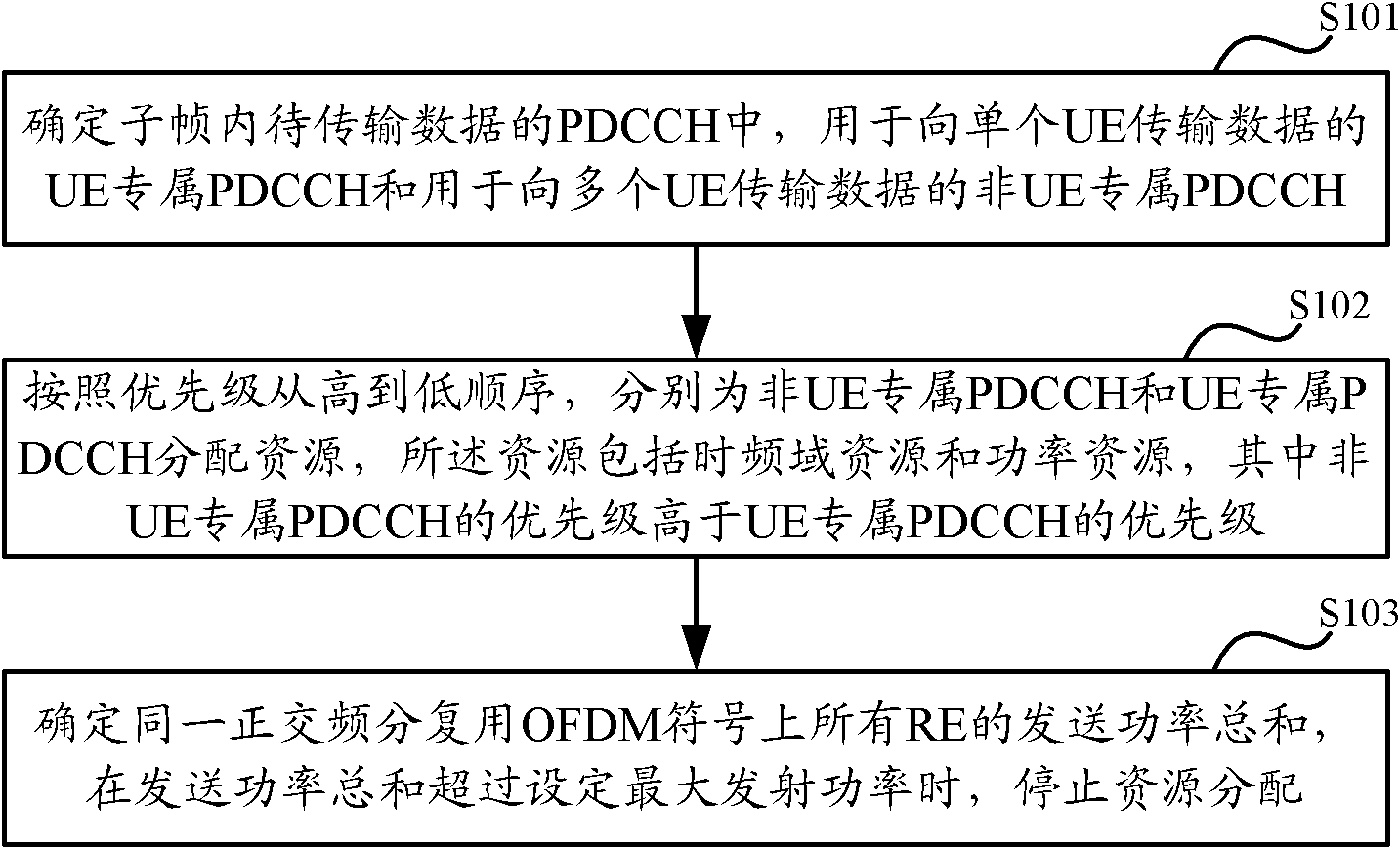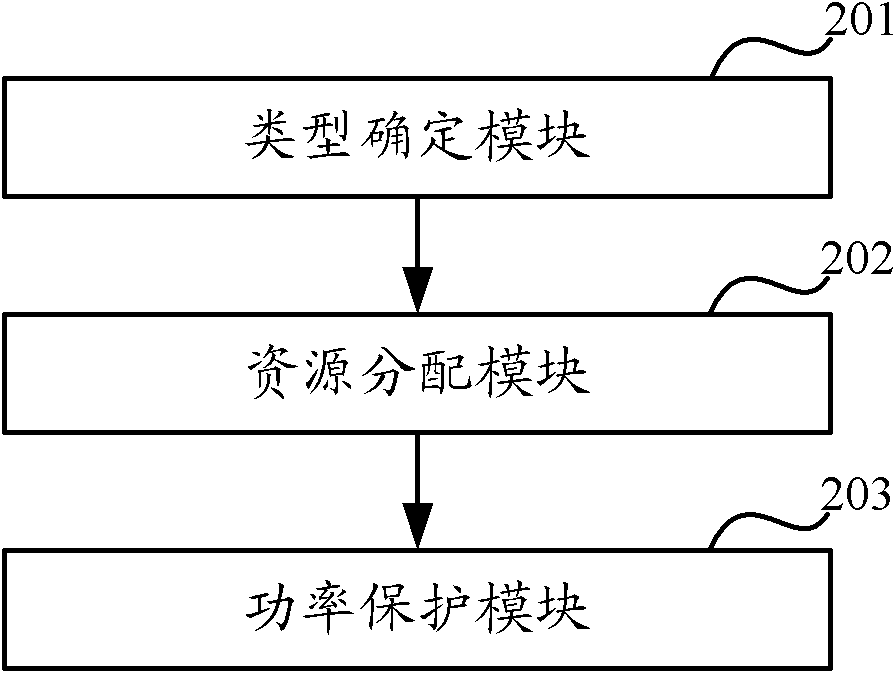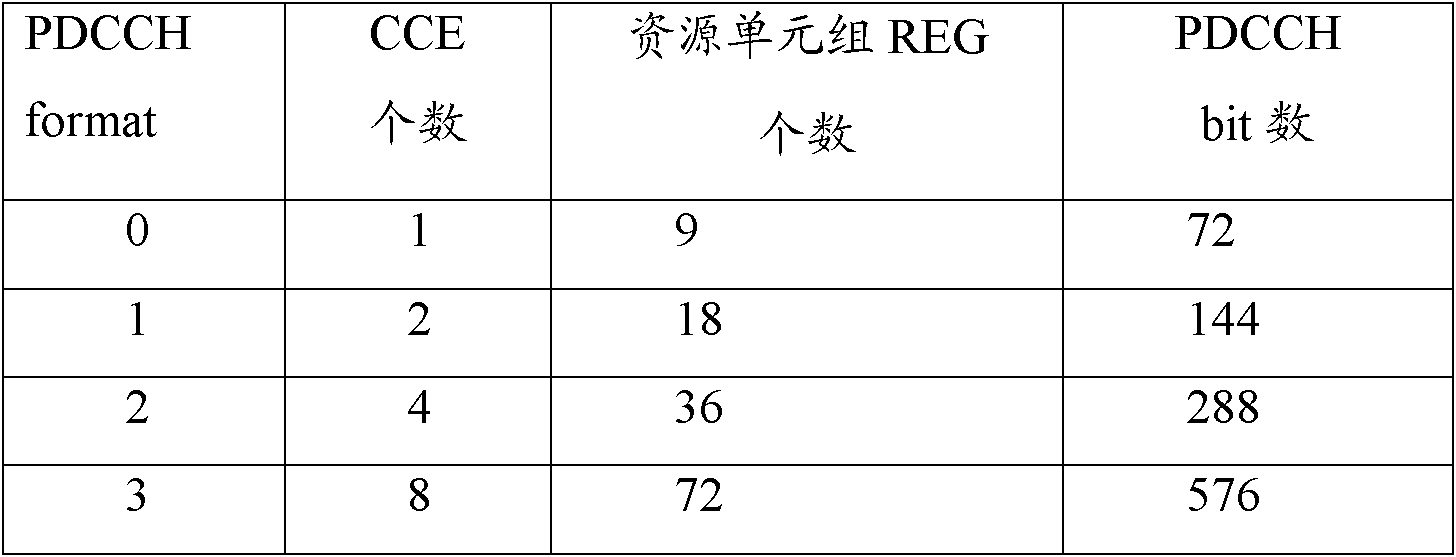Combined adaptive resource allocation method and device for PDCCH (Physical Downlink Control Channel)
A resource allocation and self-adaptive technology, applied in electrical components, wireless communication and other directions, can solve the problems of limited, limited system capacity, limited number of CCEs, etc., to achieve the effect of scheduling the number of users
- Summary
- Abstract
- Description
- Claims
- Application Information
AI Technical Summary
Problems solved by technology
Method used
Image
Examples
Embodiment 1
[0086] This embodiment provides a non-UE-specific PDCCH adaptive allocation of time-frequency domain resources and power resources, specifically including:
[0087] 1) The load statistics module gives the load status of the cell at the current moment. When the cell load is greater than the set threshold, determine the 4 CCEs supported by the non-UE-specific PDCCH during resource allocation in the time-frequency domain; otherwise, determine the use of 8 CCEs;
[0088] 2) For non-UE-specific PDCCH power allocation to meet the principle of coverage, according to the target signal-to-interference and noise ratio SINR that the cell edge users expect to achieve target , noise power spectral density m, frequency bandwidth RE of a single resource unit RE band , Downlink noise figure NoiseFigure down , downlink interference tolerance IoT down and the path loss PL from the center of the cell to the edge of the cell O , to determine the transmission power P that meets the cell edge co...
Embodiment 2
[0099] This embodiment provides a scheme for adaptively allocating time-frequency domain resources and power resources by a UE-specific PDCCH.
[0100] When the eNodeB on the network side receives the downlink broadband channel quality indicator CQI reported by the UE, the PDCCH transmission power is based on the current PDSCH transmission power P PDSCH and the downlink broadband CQI reported by the UE are determined.
[0101] The downlink CQI defined in the LTE protocol 36.213 is calculated according to the default transmission mode of the PDSCH channel. When the eNodeB currently knows the downlink broadband CQI information reported by the UE, it needs to consider the difference between the code rate of the PDSCH indicated by the CQI and the code rate of the PDCCH. Includes the following differences:
[0102] PDCCH adopts convolutional coding, PDSCH adopts Turbo coding, and has different coding gains under the same coding rate;
[0103] PDCCH has interleaving gain, PDSCH h...
PUM
 Login to View More
Login to View More Abstract
Description
Claims
Application Information
 Login to View More
Login to View More - R&D
- Intellectual Property
- Life Sciences
- Materials
- Tech Scout
- Unparalleled Data Quality
- Higher Quality Content
- 60% Fewer Hallucinations
Browse by: Latest US Patents, China's latest patents, Technical Efficacy Thesaurus, Application Domain, Technology Topic, Popular Technical Reports.
© 2025 PatSnap. All rights reserved.Legal|Privacy policy|Modern Slavery Act Transparency Statement|Sitemap|About US| Contact US: help@patsnap.com



